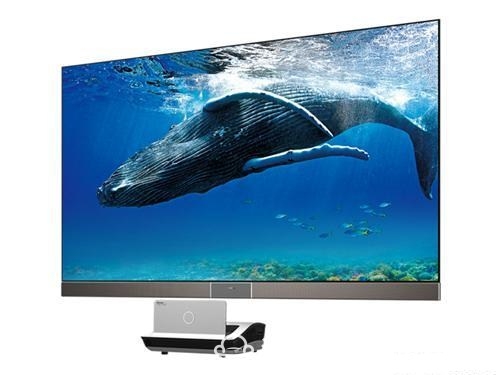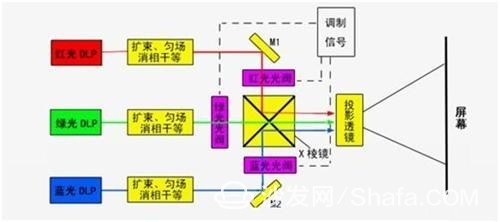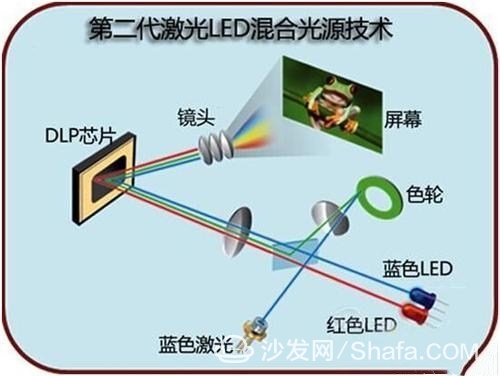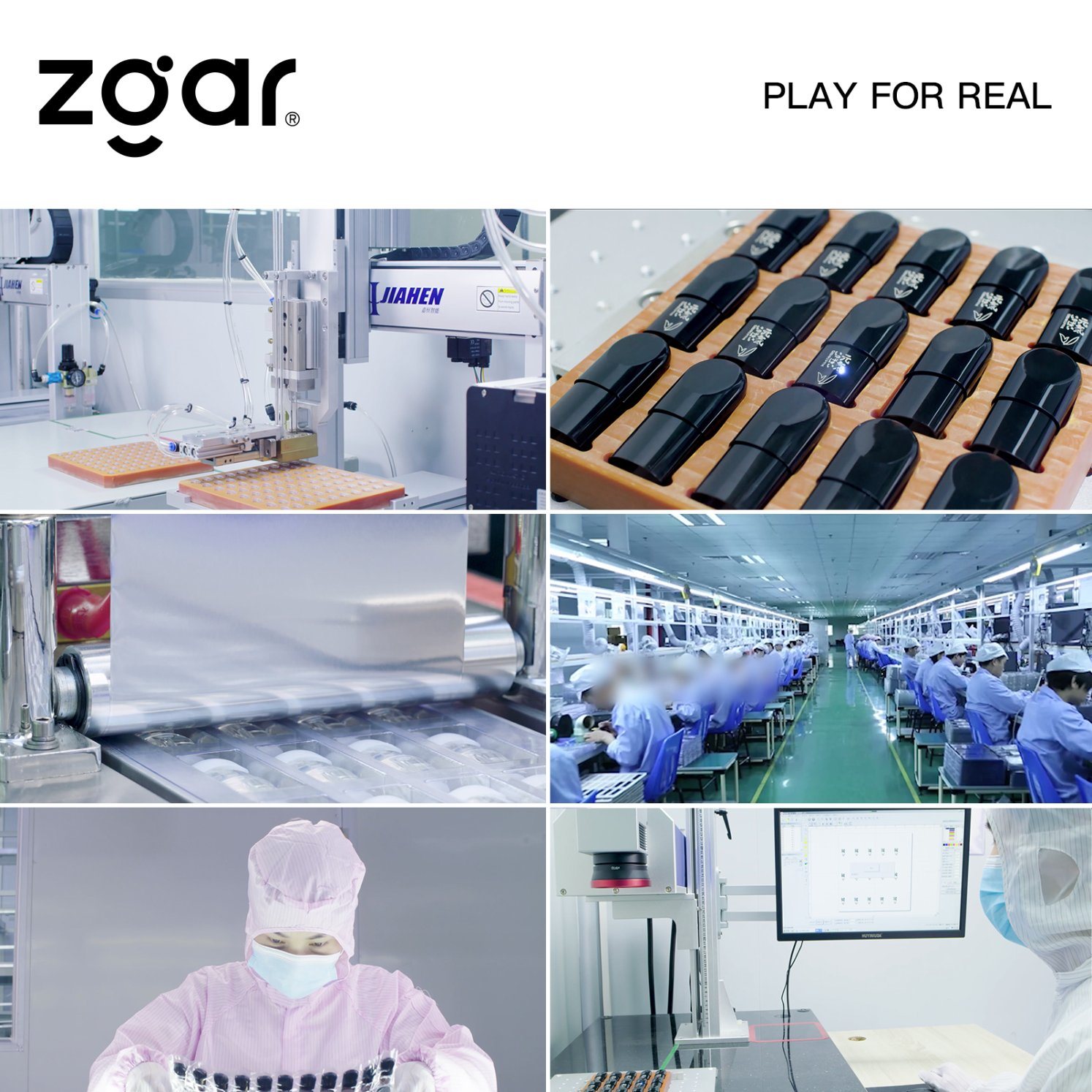What exactly is ALPD and then is it different from other projection technologies?
What is ALPD?
ALPD is an abbreviation of "Advanced Laser Phosphor Display", which is an advanced laser fluorescence display technology. ALPD uses a GaN-based blue laser to excite a fluorescent material to generate one or more primary colors for image display, and is the most critical core technology for high-brightness image display.

Traditional image display devices use HID light sources such as high-brightness bulbs to display color images, but these bulbs suffer from shortcomings such as short life, low efficiency, and toxic materials. Since the invention of the LED, due to its high efficiency and long life, it has been rapidly applied to image display devices such as televisions. However, despite advances in LED technology, which can provide greater luminous flux, but limited by a larger amount of optical expansion, its brightness can not provide high-brightness display requirements, and even better than some traditional high-brightness bulbs, such as traditional projectors with high voltage Mercury lamp.
The laser has good directionality. The laser spot can be focused to a tiny spot (minimum to a few microns in diameter). Its brightness is not only 100 to 1,000 times higher than that of an LED. It is higher than traditional high-brightness helium. The lights are also greatly improved. However, its high cost, low electro-optical conversion efficiency and reliability greatly constrain the application of laser in the display field.
ALPD fluorescence laser technology retains the inherent high brightness advantages of traditional lasers. At the same time, it adopts a basic technology route similar to mainstream LED illumination and display blue light plus fluorescent materials, innovative invention of remote rotating fluorescent devices, cleverly solved the fluorescence The thermal quenching problem is converted and the high conversion efficiency is still maintained under the laser excitation of high density lasers.
At the same time, the use of GaN blue laser and YAG and nitride fluorescent materials effectively extends the advantages of LED's high reliability and long life. The ALPDTM laser source has both the advantages of traditional lasers and LEDs, and solves the shortcomings of both. It is a subversive new type of light source and a major breakthrough in the history of lighting technology.

ALPD3.0 Technology
Compared with the traditional ALPD technology, three-primary RGB three-chip DLP and LCD projection systems, the color performance is still not satisfactory. The four-segment color wheel technology, which is widely used to achieve more efficient brightness, has become an obstacle for ALPD products to really enter the "high-end color" application market. How to maximize the efficiency of DLP optical system, how to make the advantages of laser color accuracy upgrade again, how to protect the ultimate goal of color, do not lose the advantages of ALPD economic reliability! All these problems need ALPD3.0 technology to solve.

"Red laser + red phosphor" red light scheme, and with RGB three-color three-segment color wheel system, achieve ALPD3.0 CLO brightness and nominal brightness, red light energy ratio increased to more than 20%, and effective Solve the problem of simply increasing the speckle noise and chroma consistency caused by the red laser.
New red laser, uniquely designed red phosphor formula, RGB three-segment color wheel, coaxial RGB three-segment filter, full-fluorescent converted speckle-free, and high color width - these technologies integrate to ensure ALPD3.0 has become one of the best color laser display solutions ever. The technology is still highly adaptable to the monolithic DLP projection system and maintains the economic features of the entire product solution. It is a high-efficiency, high-color laser display solution that can be widely used at this stage. At the same time, the high red light ratio of this solution makes it the only compact laser display solution that can efficiently adapt the three-chip projection system, and greatly expands the application of the laser fluorescence technology system.
ALPD3.0 solves the problem of improving the laser display color effect and further enhances the brightness performance of ALPD technology products.
The world's largest laser display technology
Up to now, there are three major categories of laser display light sources: three primary color lasers (RGB), phosphor lasers (ALPD), and laser hybrid light sources (laser and LED hybrids). Each type of light source has its own advantages and disadvantages. Below, the author for everyone to come to make a comparison between the three, for reference only.
Trichromatic Pure Laser (RGB)
Three-color pure laser is considered as the most orthodox laser light source in the industry. It has a wide color gamut, high luminous efficiency, long life, low power consumption, good consistency, adjustable color temperature brightness, stability, safety and reliability, maintenance-free, flexible application, etc. advantage.
Trichromatic pure laser light sources have been developed until now and have experienced two technological processes: the solid-state laser stage and the semiconductor laser stage.
Semiconductor-pumped frequency doubled laser is a solid-state laser light source composed of a semiconductor laser (a pump source), a laser crystal, a frequency-doubling crystal, and an output cavity mirror, and has a complicated laser generation process, a complicated structure, a complicated production process, and poor stability. , poor reliability and other characteristics. The semiconductor-pumped frequency-doubled laser has a single center wavelength, its spectral width is within 3nm, and the mode is a single-mode light source, which greatly contributes to the generation of laser speckle, and the speckle particles are very large, making the process of the speckle disperse very complicated.
The semiconductor laser light source is a miniature laser developed based on a semiconductor chip preparation technology, and is similar to the production process of an LED chip, and has a simple structure, small size, stable power, high reliability, and long service life.

Phosphors (ALPD)
The ALPD laser source technology overcomes the fundamental technical difficulties of laser display in terms of cost-effectiveness, efficiency and reliability. The ALPD laser light source has the following features:
The color is more pure and closer to the international standard color gamut;
Long life: ≥60000 hours, 10 times longer than UHP lamp (high pressure gas arc discharge lamp), 2 times higher than existing laser source;
High safety and reliability: no need to eliminate coherence, safety to the human eye, and no danger of explosion.
Laser+LED hybrid light source
During the transition from LED light source to laser light source technology, a hybrid technology emerged. The laser + LED new light source combines the characteristics of long life and wide color gamut of these two kinds of light sources. It achieves high brightness and is more environmentally friendly. At this stage, it is mainly used in business and education.
The laser+LED hybrid light source technology uses red (high-brightness red LED), green (blue laser light converted to green by phosphor), and blue (blue laser light) three colors, which can be projected by the DLP chip without using a high-pressure mercury lamp. High brightness projection. One of the biggest advantages over traditional projection light bulbs is their long life.

Laser + LED new light source technology detailed
At present, hybrid lasers are mostly used for DLP/LCD. Red and blue lasers are used, and green light is used for LEDs. This sort of patchwork is also a part of the lifespan problem, and the effect is general.
In addition, it is worth mentioning that there is a dispute between laser and LED in the display industry. Because the luminescence with low brightness has not been resolved, LED light source devices may not have a place to survive. Judging from the development trend of the industry, the best light source for the current market is no less than a laser light source. Although LED was once considered a “next generation†light source, it is difficult to achieve high brightness, so its prospects are worrying. After the introduction of the three-primary pure laser technology, LED light sources have been "abandoned" by some manufacturers.
other
In addition, in recent years, some domestic manufacturers have also released two-color laser projectors. The two-color laser projector is based on the blue laser fluorescent color wheel technology and adds a red laser, which can bring the laser projection to a larger color gamut coverage, better color appearance, and richer red details. Of course, the model I saw was still a product of "compromise." Because the red laser, the product is still not using the best quality solution, it can only increase the overall light source luminous efficiency of 9%, two-color laser light source color gamut effect, and the difference between the three primary colors laser is still a certain distance. Two-color lasers have been regarded as a phenomenon of technological transition in the industry and an attempt to shift the phosphor route to three primary colors.
ALPD technology innovatively solves the market problem of laser display technology. At the same time, ALPD technology can also effectively reduce energy consumption in terms of energy saving and environmental protection. The power consumption of 100-inch “screening†laser TV is about 200 watts, and the power consumption is only The same size LED LCD TV's 20% to 30%, much lower than the 400-watt power consumption of other laser TV brands.
After 10 years of research and development process, ALPD laser phosphor technology can also be described as thick and thin, and its innovation speed is like opening the plug-in mode. Each breakthrough can bring us surprises, especially ALPD 3.0 technology, more domestic companies. It is walking in the forefront, allowing the world to see our technological power.
Smart TV/box information can focus on smart TV information network sofa butler (http://), China's influential TV box and smart TV website, providing information, communication, TV boxes, smart TVs, smart TV software, etc. Answering questions.
ZGAR PCC KIT
ZGAR electronic cigarette uses high-tech R&D, food grade disposable pod device and high-quality raw material. All package designs are Original IP. Our designer team is from Hong Kong. We have very high requirements for product quality, flavors taste and packaging design. The E-liquid is imported, materials are food grade, and assembly plant is medical-grade dust-free workshops.
From production to packaging, the whole system of tracking, efficient and orderly process, achieving daily efficient output. We pay attention to the details of each process control. The first class dust-free production workshop has passed the GMP food and drug production standard certification, ensuring quality and safety. We choose the products with a traceability system, which can not only effectively track and trace all kinds of data, but also ensure good product quality.
We offer best price, high quality Vape Device, E-Cigarette Vape Pen, Disposable Device Vape,Vape Pen Atomizer, Electronic cigarette to all over the world.
Much Better Vaping Experience!


E-Cigarette Vape Pen,Disposable Device Vape,PCC SET, Vape Pen Atomizer,Latest Disposable E-Cigarette OEM vape pen,OEM electronic cigarette
ZGAR INTERNATIONAL(HK)CO., LIMITED , https://www.oemvape-pen.com